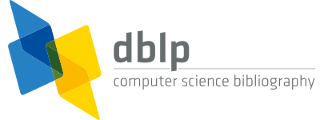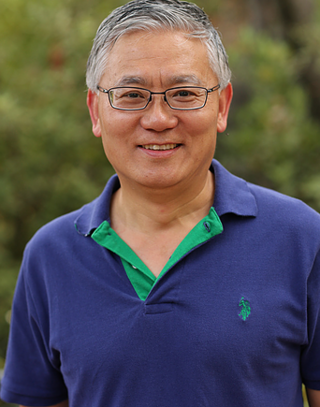The Association for Computing Machinery (ACM) is a US-based international learned society for computing. It was founded in 1947 and is the world's largest scientific and educational computing society. The ACM is a non-profit professional membership group, claiming nearly 110,000 student and professional members as of 2022. Its headquarters are in New York City.
Computational linguistics is an interdisciplinary field concerned with the computational modelling of natural language, as well as the study of appropriate computational approaches to linguistic questions. In general, computational linguistics draws upon linguistics, computer science, artificial intelligence, mathematics, logic, philosophy, cognitive science, cognitive psychology, psycholinguistics, anthropology and neuroscience, among others.
Text mining, text data mining (TDM) or text analytics is the process of deriving high-quality information from text. It involves "the discovery by computer of new, previously unknown information, by automatically extracting information from different written resources." Written resources may include websites, books, emails, reviews, and articles. High-quality information is typically obtained by devising patterns and trends by means such as statistical pattern learning. According to Hotho et al. (2005) we can distinguish between three different perspectives of text mining: information extraction, data mining, and a knowledge discovery in databases (KDD) process. Text mining usually involves the process of structuring the input text, deriving patterns within the structured data, and finally evaluation and interpretation of the output. 'High quality' in text mining usually refers to some combination of relevance, novelty, and interest. Typical text mining tasks include text categorization, text clustering, concept/entity extraction, production of granular taxonomies, sentiment analysis, document summarization, and entity relation modeling.

DBLP is a computer science bibliography website. Starting in 1993 at Universität Trier in Germany, it grew from a small collection of HTML files and became an organization hosting a database and logic programming bibliography site. Since November 2018, DBLP is a branch of Schloss Dagstuhl – Leibniz-Zentrum für Informatik (LZI). DBLP listed more than 5.4 million journal articles, conference papers, and other publications on computer science in December 2020, up from about 14,000 in 1995 and 3.66 million in July 2016. All important journals on computer science are tracked. Proceedings papers of many conferences are also tracked. It is mirrored at three sites across the Internet.

Ben Shneiderman is an American computer scientist, a Distinguished University Professor in the University of Maryland Department of Computer Science, which is part of the University of Maryland College of Computer, Mathematical, and Natural Sciences at the University of Maryland, College Park, and the founding director (1983-2000) of the University of Maryland Human-Computer Interaction Lab. He conducted fundamental research in the field of human–computer interaction, developing new ideas, methods, and tools such as the direct manipulation interface, and his eight rules of design.
In the field of human–computer interaction, a Wizard of Oz experiment is a research experiment in which subjects interact with a computer system that subjects believe to be autonomous, but which is actually being operated or partially operated by an unseen human being.
In linguistics, statistical semantics applies the methods of statistics to the problem of determining the meaning of words or phrases, ideally through unsupervised learning, to a degree of precision at least sufficient for the purpose of information retrieval.
Terminology extraction is a subtask of information extraction. The goal of terminology extraction is to automatically extract relevant terms from a given corpus.
Faceted search augments lexical search with a faceted navigation system, allowing users to narrow results by applying filters based on a faceted classification of the items. It is a parametric search technique. A faceted classification system classifies each information element along multiple explicit dimensions, facets, enabling the classifications to be accessed and ordered in multiple ways rather than in a single, pre-determined, taxonomic order.

Ontology learning is the automatic or semi-automatic creation of ontologies, including extracting the corresponding domain's terms and the relationships between the concepts that these terms represent from a corpus of natural language text, and encoding them with an ontology language for easy retrieval. As building ontologies manually is extremely labor-intensive and time-consuming, there is great motivation to automate the process.
Human–computer information retrieval (HCIR) is the study and engineering of information retrieval techniques that bring human intelligence into the search process. It combines the fields of human-computer interaction (HCI) and information retrieval (IR) and creates systems that improve search by taking into account the human context, or through a multi-step search process that provides the opportunity for human feedback.

William Arthur Stewart Buxton is a Canadian computer scientist and designer. He is a partner researcher at Microsoft Research. He is known for being one of the pioneers in the human–computer interaction field.
Elizabeth D. "Beth" Mynatt is the Dean of the Khoury College of Computer Sciences at Northeastern University. She is former executive director of the Institute for People and Technology, director of the GVU Center at Georgia Tech, and Regents' and Distinguished Professor in the School of Interactive Computing, all at the Georgia Institute of Technology.
Julia Hirschberg is an American computer scientist noted for her research on computational linguistics and natural language processing.
Video browsing, also known as exploratory video search, is the interactive process of skimming through video content in order to satisfy some information need or to interactively check if the video content is relevant. While originally proposed to help users inspecting a single video through visual thumbnails, modern video browsing tools enable users to quickly find desired information in a video archive by iterative human–computer interaction through an exploratory search approach. Many of these tools presume a smart user that wants features to interactively inspect video content, as well as automatic content filtering features. For that purpose, several video interaction features are usually provided, such as sophisticated navigation in video or search by a content-based query. Video browsing tools often build on lower-level video content analysis, such as shot transition detection, keyframe extraction, semantic concept detection, and create a structured content overview of the video file or video archive. Furthermore, they usually provide sophisticated navigation features, such as advanced timelines, visual seeker bars or a list of selected thumbnails, as well as means for content querying. Examples of content queries are shot filtering through visual concepts, through some specific characteristics, through user-provided sketches, or through content-based similarity search.
Emily M. Bender is an American linguist who is a professor at the University of Washington. She specializes in computational linguistics and natural language processing. She is also the director of the University of Washington's Computational Linguistics Laboratory. She has published several papers on the risks of large language models.
Argument technology is a sub-field of collective intelligence and artificial intelligence that focuses on applying computational techniques to the creation, identification, analysis, navigation, evaluation and visualisation of arguments and debates.

Shumin Zhai is a Chinese-born American Canadian Human–computer interaction (HCI) research scientist and inventor. He is known for his research specifically on input devices and interaction methods, swipe-gesture-based touchscreen keyboards, eye-tracking interfaces, and models of human performance in human-computer interaction. His studies have contributed to both foundational models and understandings of HCI and practical user interface designs and flagship products. He previously worked at IBM where he invented the ShapeWriter text entry method for smartphones, which is a predecessor to the modern Swype keyboard. Dr. Zhai's publications have won the ACM UIST Lasting Impact Award and the IEEE Computer Society Best Paper Award, among others, and he is most known for his research specifically on input devices and interaction methods, swipe-gesture-based touchscreen keyboards, eye-tracking interfaces, and models of human performance in human-computer interaction. Dr. Zhai is currently a Principal Scientist at Google where he leads and directs research, design, and development of human-device input methods and haptics systems.
Preslav Nakov is a computer scientist who works on natural language processing. He is particularly known for his research on fake news detection, automatic detection of offensive language, and biomedical text mining. Nakov obtained a PhD in computer science under the supervision of Marti Hearst from the University of California, Berkeley. He was the first person to receive the prestigious John Atanasov Presidential Award for achievements in the development of the information society by the President of Bulgaria.





